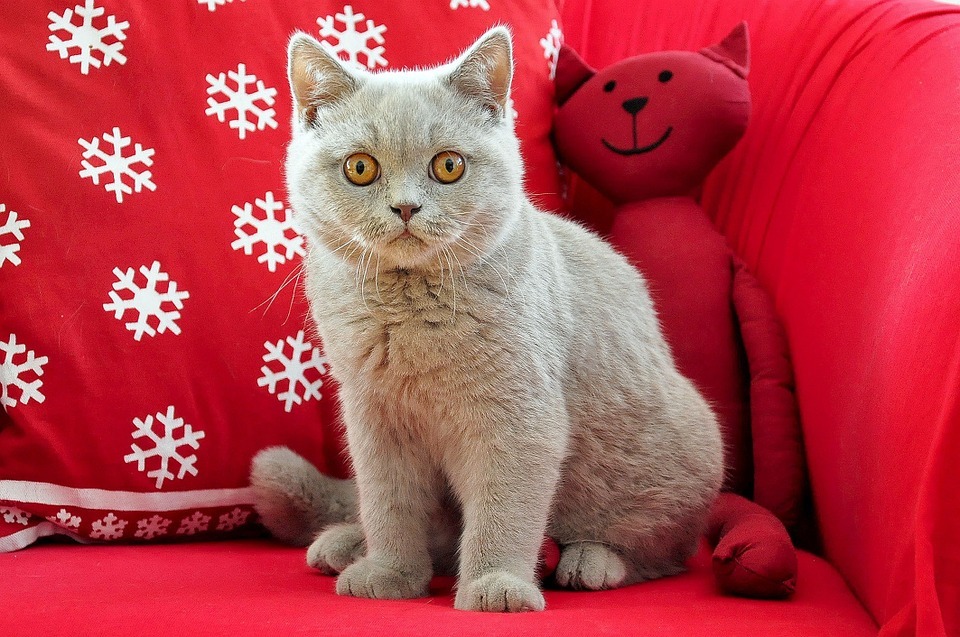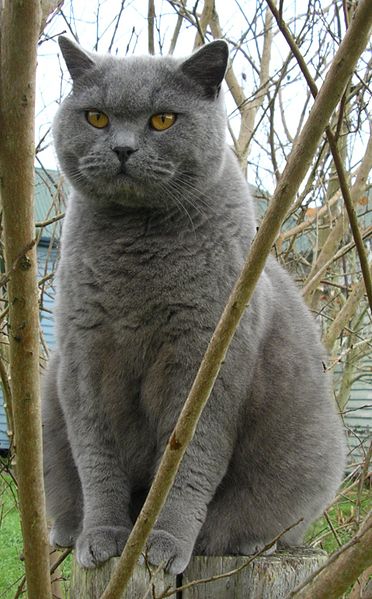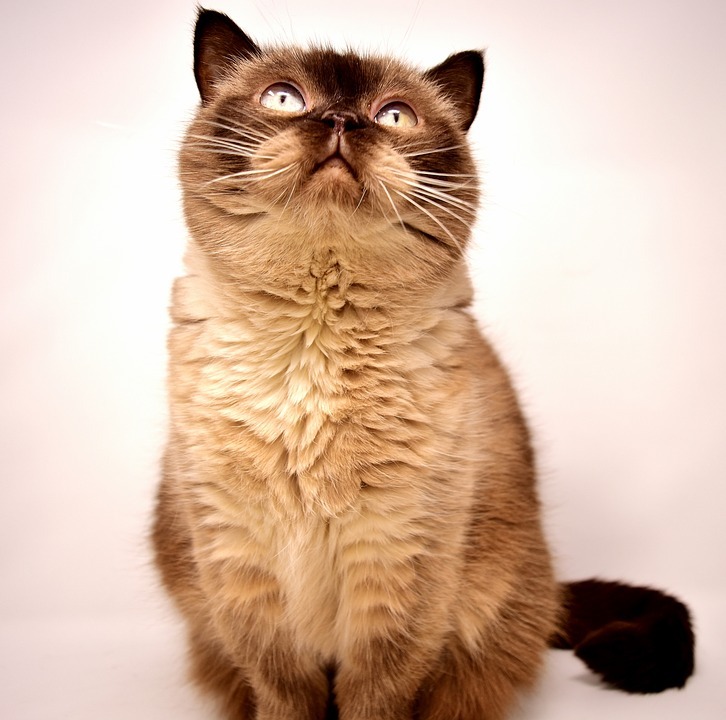The British Shorthair cat breed is a pedigreed variety of the traditional British domestic cat. This breed is an ancient cat which probably originated from European domestic cats that were imported to Britain by the Romans in the first century AD. This cat has a good-natured appearance and a calm temperament, making it a frequent media star. It is the inspiration for John Tenniel’s illustration of the Cheshire Cat in Alice in Wonderland. Let us know more about the history and characteristics of the British Shorthair cat breed.
History
The British Shorthair’s origins most likely date back to the first century AD because it is thought that the invading Romans brought Egyptian domestic cats to Great Britain and these cats then interbred with local European wildcats. Their naturally isolated descendants developed into large, robust cats with a short and thick cat to withstand conditions on their native lands better over the centuries.
It was in the 19th century when selective breeding of the best examples of the type began. The breeding had an emphasis on developing the unusual blue-grey variant which is called the “British Blue” or the “English Type”. Harrison Weir, a UK artist, and a pioneering cat fancier was directly credited by some sources with the initial concept of standardizing the breed. But others suggest that a group of breeders may have been involved. In 1871, the new British Shorthair was featured at the first-ever cat show that was held at the Crystal Palace in London and was organized by Weir. It was where the cat breed enjoyed its great initial popularity.
In the 1890s, Persian and other longhaired cat breeds became popular and the British Shorthair had fallen out of favor. By World War I, the breeding and stock of British Shorthairs had become critically rare. Two world wars have devastated the breed and only a few were left after the Second World War. But with the help of other breeds, the British Shorthairs were revitalized.
In 1967, the American Cat Association recognized the British Shorthair. However, the Cat Fanciers Association did not accept the breed until 1980. But today, all cat associations recognize the British Shorthair cat breed.
Characteristics of a British Shorthair Cat
Average weight: 8 – 14 pounds
Life span: 12 – 17 years
Hypoallergenic: Yes
The British Shorthair is a powerful-looking and a large cat that has a broad chest, strong legs, rounded paws, and blunt-tipped tail. Its head is large and rounded with a short muzzle and broad cheeks. Their ears are large, pointy, and widely set. Its coat is one of the British Shorthair’s defining features. It is very dense but they do not have an undercoat. Therefore, the texture of their coats is plush instead of fluffy or woolly. It has a firm crisp pile that breaks over the body as it moves.
British Shorthairs are developed into many colors and patterns such as black, blue, red, cream, white, golden, silver, and as well as cinnamon and fawn. These colors are either solid or in tabby, shaded, and bicolor patterns. This cat breed does not reach full physical maturity until it is 3 to 5 years old.
The British Shorthair is a mellow and easygoing cat that is excellent as a family pet or companion. It is an affectionate cat but will follow you around the house during the day. It has a quiet voice and it does not require a lap, but it will love to sit next to you. Since it is a big cat, it is not fond of being carried around. Also, this breed only has a moderate activity level and most of them are usually couch potatoes. They are rarely destructive and they are able to welcome guests confidently.
When it comes to having children at home, this mild-mannered cat is well suited to that life because it loves the affection that children give. They can also live well with other pets like with a cat-friendly dog.
Caring for a British Shorthair Cat
British Shorthair cats have short and smooth coats that are easy to groom. They simply need weekly brushing or combing to remove dead hairs and a bath is rarely needed. Standard grooming such as brushing their teeth daily and trimming their nails weekly are needed to keep them fresh and clean. You can also check their ears weekly and wipe them out with a cotton ball or a soft damp cloth if they look dirty.
Their litter boxes should always be clean to prevent their coats from becoming dirty. Avoid letting your British Shorthair cat go outside to protect it from acquiring diseases from other cats and as well as from attacks from dogs and from getting hit by a car.
It’s important to feet your British Shorthair age-appropriate foods. When it is a kitten, it should be given a specially formulated kitten food and when it reaches 1-year old, or when your vet recommends it, you can transition to giving it regular adult cat food. Make sure to choose high-quality cat foods and of course, one that your pet enjoys. Make sure to change your cat’s water daily to keep it hydrated and avoid overfeeding it because British Shorthairs are kind of lazy and obesity is a serious health risk for them.
If you’re looking for an affectionate pet that is low-maintenance and very easy to take care of, then a British Shorthair cat might be the perfect one for you. If you have kids at home, they will also surely love to play and cuddle it as well.



